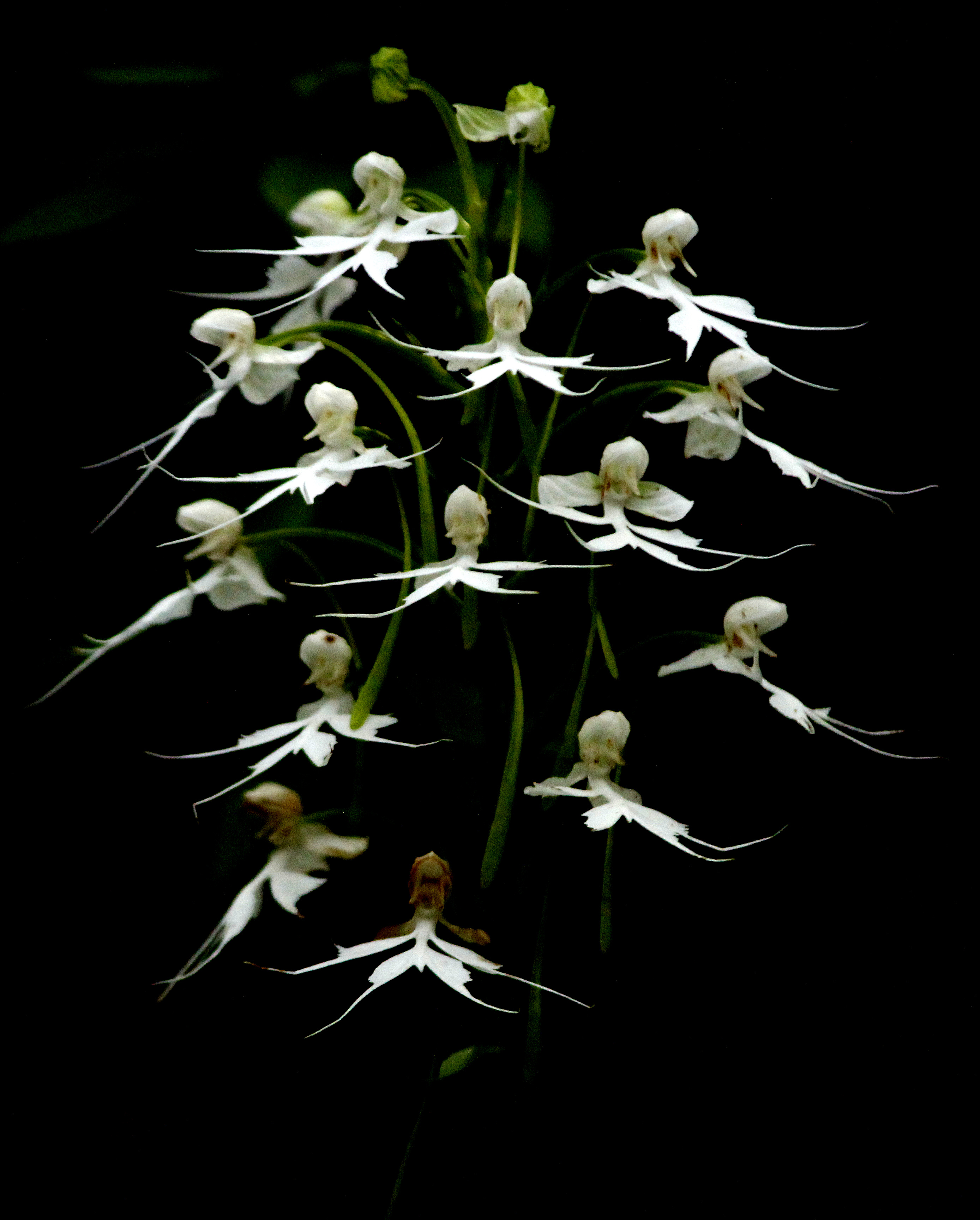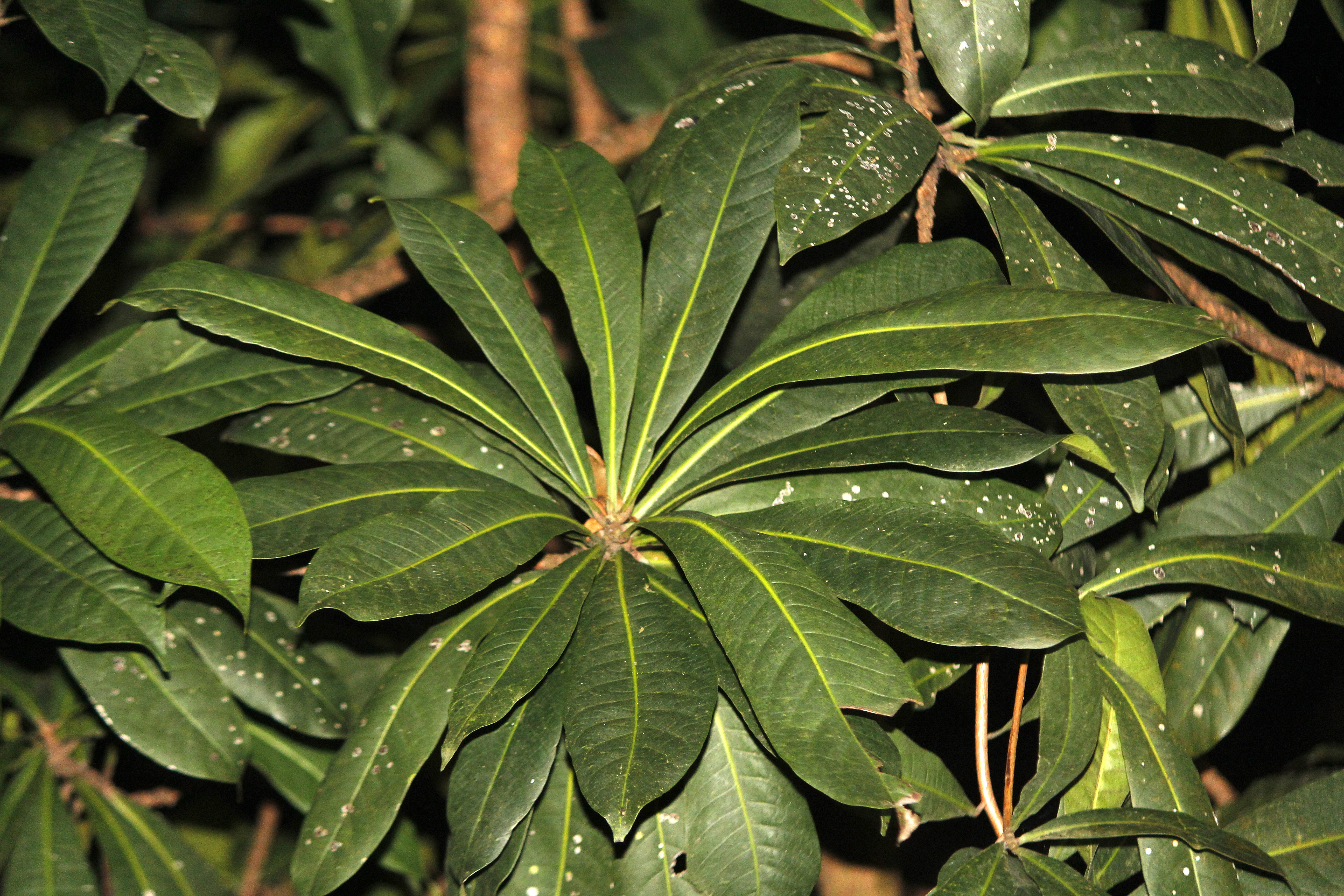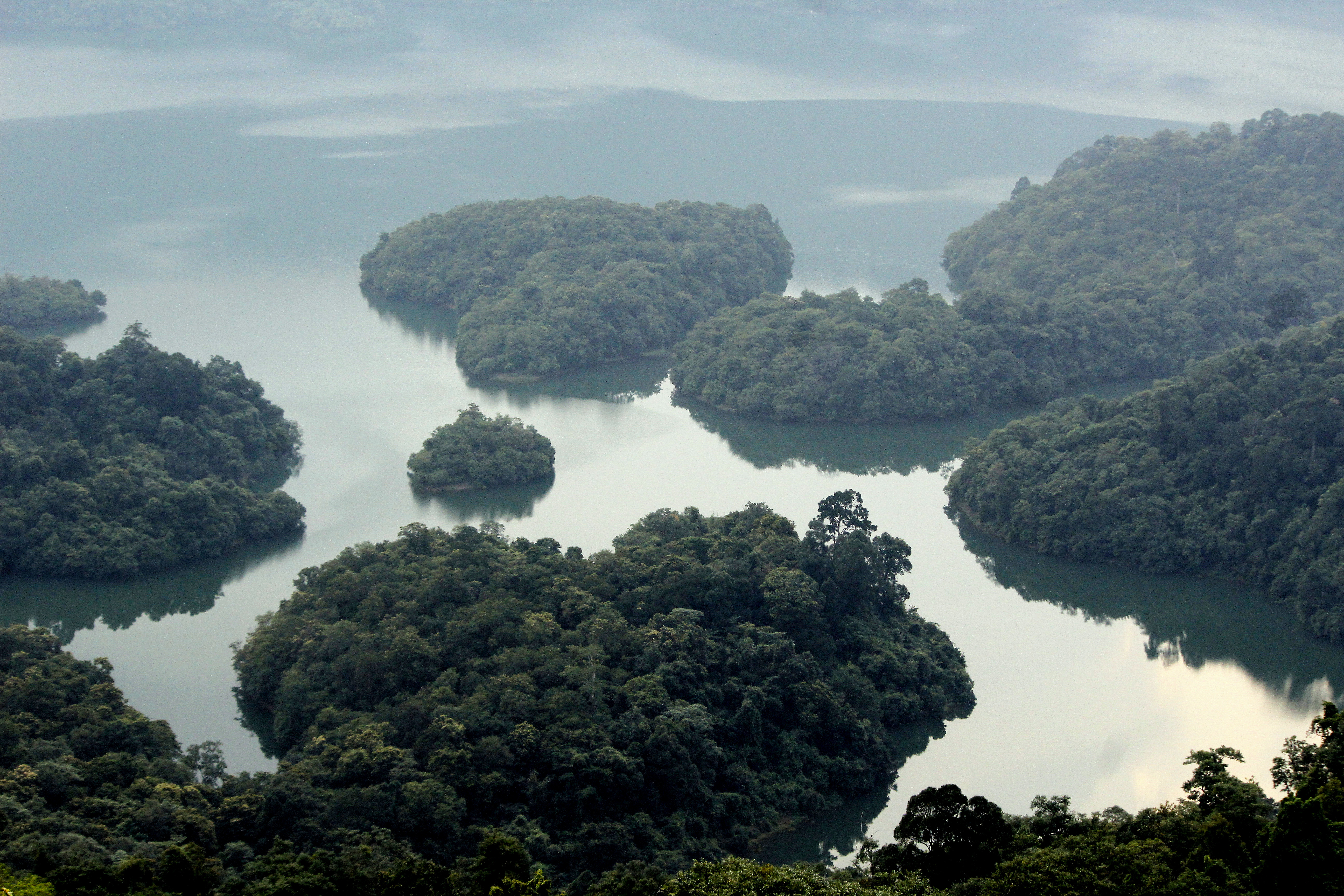The destination was Shenthurny WildLife Sanctuary in Kollam district. 172 km2 protected area lies in the eastern side of Kollam district bordering Tamilnadu and comes under the Agasthyamalai Biosphere Reserve. Thenmala ecotourism project is the first systematic eco-tourism project of Kerala forest department. The sanctuary is named after the endemic tree ‘Chenkurinji” (Gluta travancorica) found in good numbers there. In the IUCN Redlist the tree is having near threatened status.
After participating in a workshop at SCERT at Thiruvananthapuram I started at 6:55 am on 10th November 2017 by a KSRTC bus. The bus was on its journey to Thenkasi in Tamilnadu. The bus started it’s journey criss-crossing towns and villages of eastern parts of Trivandrum. Then it entered some hilly tracts with thick vegetation on both sides of the road after passing Nedumangad. Jawaharlal Nehru Tropical Botanical Garden and Research institute with its 300 acre conservatory for plants is situated at Palode on the way to Thenkasi. This is a place where I wish to visit for a long time, but yet to fulfill the dream. Kulathupuzha a small town surrounded by forest is also situated in between. The area is known for its peculiar myristica forest, the other only myristica woods being situated at Poongottu Kavu at Mattannur near my home village. The bus reached Thenmala dam site by 9.20. Had my breakfast from a small hotel nearby. Reached Eco-tourism centre were the butterfly enthusiasts invited for the annual butterfly survey were asked to assemble. No persons were present there except two- three from nearby places.
Formal inaugural function started by 10.40. The DFO of the sanctuary inaugurated the function. A detailed presentation was done by Dr. Kalesh Sadasivan , who has been keenly studying the butterfly diversity of the area for more than a decade. In his speech he pointed out the unique nature of the biodiversity of the sanctuary. Nine base stations were identified for the survey and the team deputed to carry out the survey of respective camps were announced. The methodology of the survey was also discussed in the gathering.
Our team consisting of T M Rajendran, Sajithkomath and Sojan Munnar were assigned the place at Rosemala settlement inside the forest near Aryankavu in the Tamilnadu border. Earlier participated in the annual butterfly survey two years back at the sanctuary. Then my base camp was at Kallar- mostly a plantation area, along with veteran butterfly expert of Kerala ,V C Balakrishnan. After lunch we started our journey in a minibus of the forest department, carrying all the groceries and vegetables for the following two days. After travelling 14 km towards Thenkasi road our vehicle took a small road towards the interior of the forest. The bus travelled 15 kilometres through dense forest were literally no road existed. The driver had to occasionally take his vehicle hundreds of metres way back when some other vehicles came from the opposite direction, for the smooth passage of both the vehicles. Forest officials accompanying us told that a KSRTC bus used to take two trips through that route, one in the morning and the other in the evening. Really that was a social service from the part of the corporation.
Reached Rosemala by 5'o clock. Another team consisting of four members who were allotted Darbhakkulam as their destination also alighted there from the bus. Darbhakkulam is situated five kilometers away approximately. They started their upward journey immediately as they had to climb steep hilly tracts before darkness embraces the whole forest.
Accommodation was provided at a guest house constructed for the purpose of tourism at Pallivasal, two kilometers away from Rosemala. (People who want to stay in the quarters for a single night have to pay Rs. 7000, we were told). Tall trees of different species and deep trench around assured the safety of the inmates from wild animals. Leeches were there outside the trench though not in plenty. Three persons were in duty for our assistance at the quarters.
The hot coffee we got immediately on entering the premises rejuvenated our spirits again. Though it was becoming dark, we roamed around the area for a while. We were asked not to venture far away without the company of the watchers, as it was deep forest. Everyone started their assignment of searching the butterflies. The first butterfly for the spot became a single individual of transparent six line blue who welcomed us from a pole erected for the electric fencing. A plane butterfly with broken tails was overseeing this welcome gesture from a little above. Some caterpillars of a skipper was also found our attention in a nearby Calamus plant. Our birder Sajith Master was attentively giving his eyes and ears to the birds chirping from the sky-high trees around.
We retreated to the quarters as it became very dark. Our men on duty started preparing food in the solar light. Food was ready by 8.30. All the curries appeared in deep red colour as if packet full of chilly powder were poured into it. In addition green chillies were added to it. That was the taste of the native people, a little more spicy in that remote and cold atmosphere. Most of us lessened the quantity of the food. A request also was made to cut short the amount of chilly for the next days, but a request neglected as the following days proved. All of us were very tired the previous day’s journey and we went to bed early. Though the elevation of the place was a little higher the temperature was not much lower.
We started our trekking by 7.45 in the morning. The trek path was a descending one by the side of a hill. As the canopy of the trees were very high and sunlight was very reluctant to trickle downwards through the foliages, we couldn’t spot even a single butterfly for the first one hour. A fallen structure resembling a place of worship was seen on the trekking path. It was a heap of granite stones adorned with rags of several colours flown around. Oil lit lamps were lying scattered here and there amidst the thick forest. The persons accompanying informed us that it was an old place of worship and people of different faiths and beliefs used to assemble there and paid prayers at specific times of the year. Most of the forests have such places of worship or places of sacredness - a sign of ancient human occurrences or a symbol of sanctity given by our forefathers to the wonderful abode of true god. In contrast , nowadays greediness and the trampling attitude from the part of the believers and priesthood have made this an opportunity to encroach and occupy ecologically fragile lands in the name of god as recurring everywhere in Kerala. The place we resided got the name ‘Pallivasal” due to this structure, the watchers said. ‘Palli’ often means the structure for worship of the Muslim and Christian communities. Earlier the Buddhist centres were addressed as ‘Palli’ and in Kerala, especially in Kollam district there are numerous places with ‘Palli” as suffixes and prefixes. Further enquiry into the history or legend was not made as we were engaged for the survey of natural history rather than cultural history!
The transect walk continued crisscrossing small hillocks and streams , mostly on the banks of the Thenmala Dam reservoir. Butterflies started trickling in as sun rays started touching the ground. One beautiful Clipper (Parthenos sylvia)over a stream was the first one to guide us through the butterfly paths. Slowly and steadily others began to follow. Common Grass Yellow (Eurema hecabe), Threespot grass Yellow (Eurema blanda), Rustic (Cupha erymanthis), and Common Cerulean(Jamides celeno) made their attendance. In an open place near the side of the reservoir our counts jumped suddenly, both species diversity and number of individuals. Blue Tigers(Tirumala limniace), Dark Blue Tigers(Tirumala septentrionis) Common Crows (Euploea core Cramer), Common Albatrosses (Appias albina Boisduval), different pierrots, some skippers etc were joyfully making zigzag movements there. Three- four species of odonates were also spotted there, most of them common. By 11 o'clock , when we have to finish the third lap of the transect our tally went up to more than 54. After the transect survey was over the team continued the tread further half an hour. It came to an end by the side of a stream with a lot of bamboo plants. As the bamboos were plenty, elephants frequented the area and place was named as ‘Anachanda’ meaning market of or for the elephants. Fuming elephant dungs were scattered there, which made us a little bit scared inside.
From the first day onwards we were eagerly searching for the Travancore Evening Brown(Parantirrhoea marshalli Wood-Mason, 1880) butterfly, a rare and endemic species of Western Ghats. It is highly elusive , and makes its appearance only in early mornings and evenings. The butterfly is very difficult to observe on the fly. At Anachanda we observed the typical cutting in the Ochlandra leaves ,usually the caterpillars of Travancore Evening Brown make. On keen observation, some caterpillars of the rare butterfly were seen lying parallel in the underside of a low-lying Ochlandra leaf. Most of our teammates were seeing this elegant cats for the first time. Every step counts is the saying, but last step that counts the most is also true. Some years back, in one of a such last step from Aralam WildLife Sanctuary some, had a golden catch of the caterpillar of Blue Nawab, a rare butterfly then.
On the return route we were able to add up some more numbers in the checklist, the great addition being some Lacewing butterflies which were hovering and flickering on the path. Though Lacewing butterflies were reported from Kannvam RF in my home district. It was for the first time I was seeing the beauty. Several of us tried to capture that ethereal beauty through the lenses.
Reached Pallivasal quarters by 2’o clock. After food everyone took rest for a while. A visit to the viewpoint two kilometers away was the agenda for the evening. Rosemala section forest office is also situated there. From the viewpoint one could see the entire area of the reservoir with half-submerged small hillocks with heavy growth of large trees inside surrounded by water. Most of the mounds might be virgin lands untouched by human beings with variety of flora and fauna isolated by the encircling river. Folds of hills and hillocks encompass the whole seeable area like petals of a rose flower vindicating the name of the place- Rosemala.
The eco-development committee charges Rs. 20 for the entry to the view point. In recent years the Forest department is extracting huge amount of money as entry fee for each and every destination. Paithal Mala, Kanhirakolly, Ranipuram etc , where we frequented as part of our weekend treks also extract good amount of money. If you are carrying a camera, whether you use it or not, hefty amount has to be paid. And further more if that amount assure you of minimum facility for a traveller reaching there, one could have satisfaction, but that is not the case at many places. At the time of our visit to the viewing point, some heated exchanges were heard at the ticket counter over the entry of some people who were claiming as the natives of the village itself. Who are the real inheritor of the precious wealth of nature is a valid point to ponder upon.
On the third day (12th November 2017)started the return journey by 7.30 am. Keeping all the baggages in the minibus , our team started our walk with camera, until the orher team from Darbhakkulam arrived and joined us. Some swifts, Malabar Raven, Common Jezebel, etc were seen. After an hour’s walk the minibus with other team picked us on the way. The road to Aryankavu through the forest was full of butterflies and some orchids. In the bright sunlight falling over the plants on both the sides of the road increased the butterfly activity profusely. The butterfly enthusiasts inside the bus made huge sound in excitement even over the sight of a common butterfly like Banded demon.They made the driver stop the minibus near every stream expecting some puddling activities, which the driver readily agreed upon. When the bus stopped in the narrow road for giving way to a jeep coming from the opposite direction , some of them jumped out of it and managed to come back with good images of Small Leopard butterflies. It was a lifer for most of them. Our team from Kannur was eager to reach Thenmala by 12 o'clock so as to reach Kollam by 3.30 pm and catch the Janasathabdi Express from there. So we requested all to speed up which they readily agreed.
On reaching Thenmala Eco-Tourism centre where all the groups were expected to assemble by afternoon to consolidate the collected data, we finalised the checklist and data sheet. Altogether there were 86 species of butterflies in the checklist plus two unidentified swifts. Forty plus birds were in the checklist for birds. We hurried up to Kottarakkara by a KSRTC bus arrived and from there to Kollam. Reached Kollam by 3 PM and had had our food there. Janashathabdi reached by 4.10am and by 12.10 pm reached Kannur. Three Travancore Evening Brown caterpillars, the lifer- Sahyadri Lacewing butterflies,a number of affectionate friends with common interest, forest watchers with their innate innocence and some blood thirsty leeches- that summarise another butterfly survey at Shendurny.








